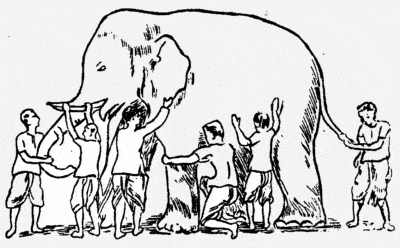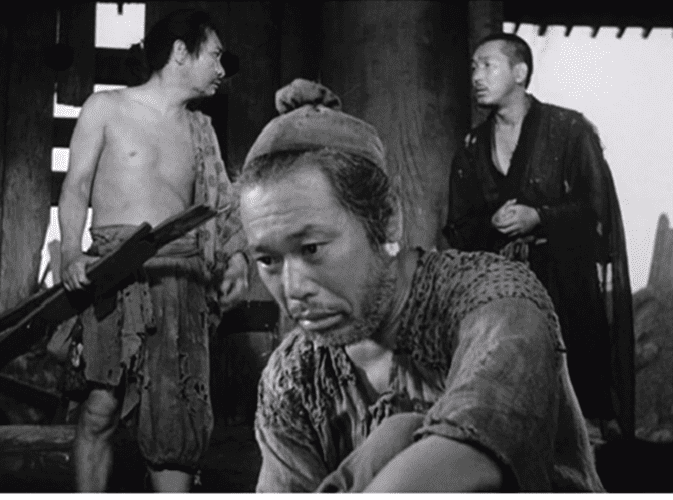Screen capture from the movie “Rashomon”
We do come across situations in which we see something from our naked eyes, we recall something else, and we narrate something else. The notorious unreliability is uncommonly common among eyewitness who has seen any accident as the first person. In other words, what we remember and even narrate does not depend on what we really see with the naked eye but, in fact, it depends on what we want to remember, what is our self-interest, and what are our own beliefs and our own understanding. This is what the Rashomon effect is.
The genesis of the Rashomon effect
The effect derives its name from the movie “Rashomon” which was directed by the legendary director Akira Kurosawa. Akira Kurosawa (23 March 1910 – 6 September 1998) was a Japanese film director and screenwriter, widely regarded as one of the most influential filmmakers in the history of cinema. He was also a painter who directed thirty films in a career spanning over five decades. He is widely regarded as one of the most important and influential filmmakers in the history of cinema. Kurosawa displayed a bold, dynamic style, strongly influenced by Western cinema yet distinct from it; he was involved with all aspects of film production.
The movie was released in 1950. The movie was also considered as the beginning of the display of the directorial prowess of Akira Kurosawa. The title of the movie was taken from a short story by Ryunosuke Akutagawa (titled “Rashomon). The movie was premiered in Tokyo, and became the surprise winner of the Golden Lion at the 1951 Venice Film Festival. The commercial and critical success of that film opened Western film markets for the first time to the products of the Japanese film industry, which in turn led to international recognition for other Japanese filmmakers.
https://www.youtube.com/watch?v=GXygJmtnvm0&t=34s&ab_channel=criterioncollection
The film opens with three men, a priest, a commoner, and a woodcutter, taking shelter from a storm under the Rashōmon Gate in Kyoto. The woodcutter and the priest are discussing the story of how the woodcutter found the body of a slain Samurai in the forest three days prior. A bandit was accused of murdering the Samurai and raping the Samurai’s wife. The woodcutter, the priest (who has seen the Samurai and his wife prior to the murder), the Samurai’s wife, the bandit, and even the ghost of the Samurai were summoned at a trial. However, each account of the event is different and contradictory. The film ends ambiguously without a clear resolution of what occurred.
It is marvel of storytelling and the utmost attempt to uncover human nature. The movie explored the issues of unreliability when depending on witness testimony. In the movie, a murder is described in four contradictory ways by four witnesses. The same murder story is said through the viewpoints of different characters who supply conflicting stories. Whether the people’s competing explanations are different because of the fallacy of memory or because of self-serving interests varies.
Caste in India: ‘blind recruitment’ for the civil service won’t fix the system
Do you remember the story of Blind men and an elephant?

Every culture has some story to warn mankind about this kind of human limitation of fallacy or human intention of telling a manufactured story which is guided by self-interest. Sometimes truth is said and perceived as false and sometimes false is accepted as truth. There is another similar story from Indian subcontinents — Blind men and an elephant.
Once upon a time, there lived six blind men in a village. One day the villagers told them, “Hey, there is an elephant in the village today.” They had no idea what an elephant is. They decided, “Even though we would not be able to see it, let us go and feel it anyway.” All of them went where the elephant was. Every one of them touched the specific body parts of the elephant. One who touch the feet, found the elephant as pillar, one who touched the tail, found the elephant as rope, one who touched the trunk of the elephant, found the elephant as a thick branch of a tree
The moral of the story is that there may be some truth to what someone says. Sometimes we can see that truth and sometimes not because they may have distinct perspectives with which we may not agree to.
Coinage and usage of the term in academia
The term “Rashomon Effect” as stated above was coined after iconic filmmaker Akira Kurosawa first utilized the storytelling technique in the film Rashomon (1950). The movie and the Rashomon Effect influenced countless films throughout history.
It is very commonly used in academia. In the world of academics, it is defined as an epistemological framework—or ways of thinking, knowing, and remembering—needed for understanding complex and ambiguous situations” Robert Anderson, a Professor in the School of Communication at Simon Fraser University published an article titled “The Rashomon Effect and Communication”. He also took an attempt to interrelate the effect with a recent murder. He draws a parallel to the 2007 death of Robert Dziekanski, a Polish immigrant who, after arriving at Vancouver International Airport, moments later got into a tussle with four Royal Canadian Mounted Police officers and was dead in less than a minute. As in Rashomon the film, multiple accounts of the incident would be put forward, and it would take over nine years of legal wrangling to try to figure out what had happened to Dziekanski.
Do you know what is Mandela Effect? Here you can read about Mandela Effect.

